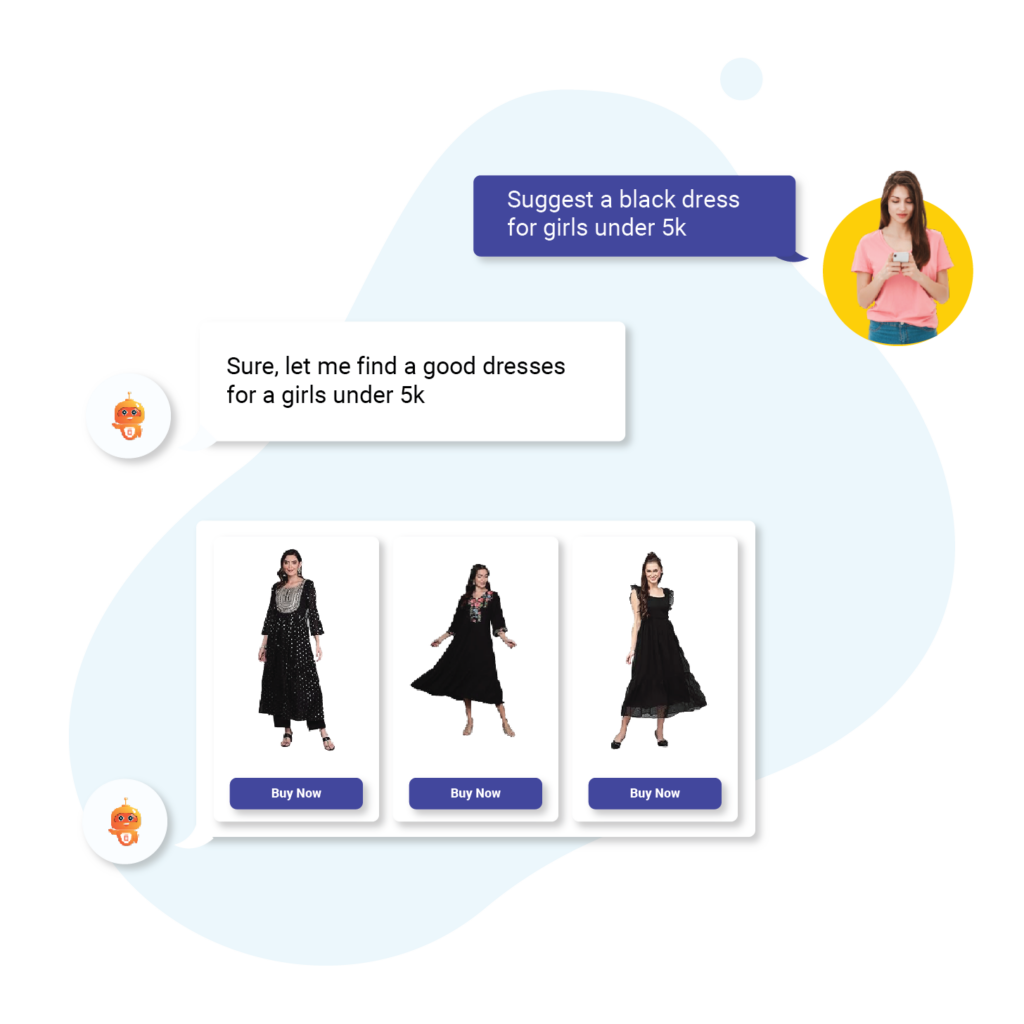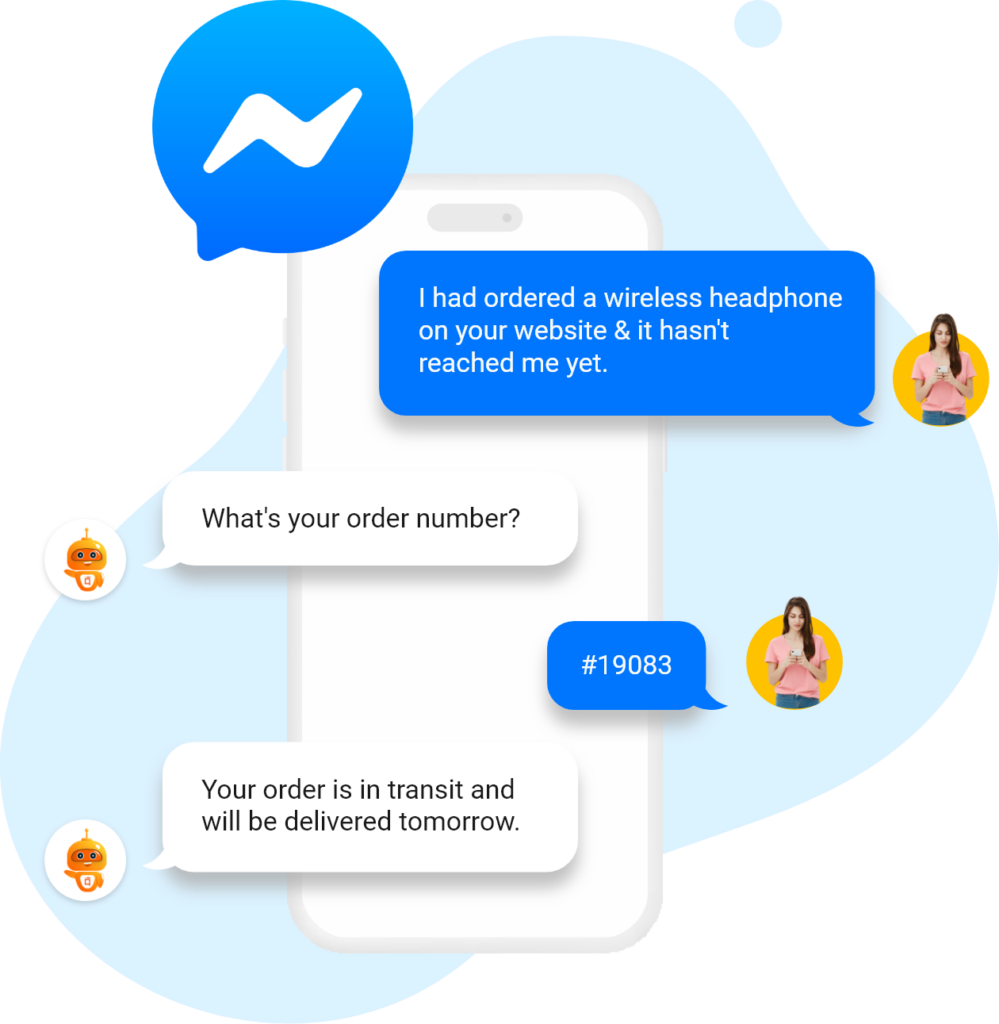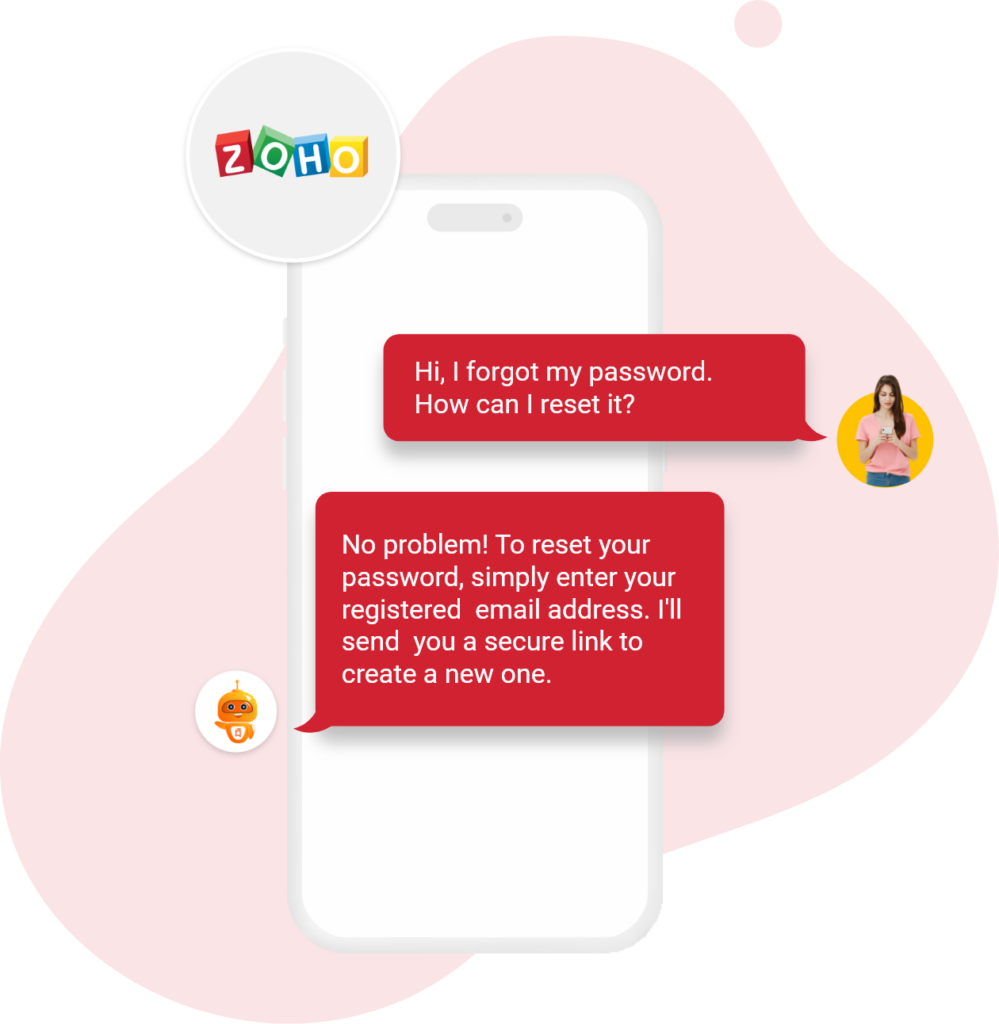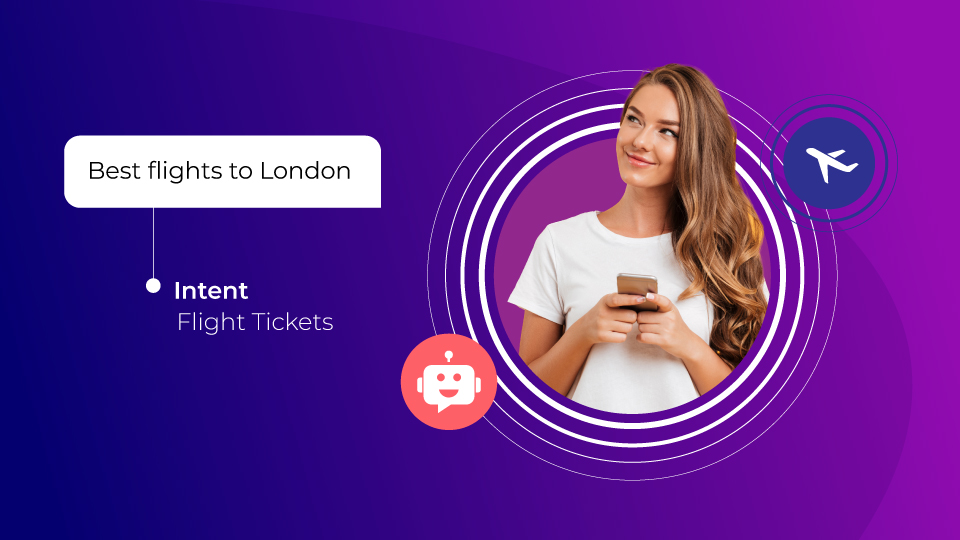Introduction
In today’s fast-paced world, customer experience (CX) reigns supreme. Businesses are constantly seeking ways to streamline interactions, provide instant support, and personalize the customer journey. Enter chatbots – virtual assistants that have revolutionized how companies engage with their audience. But for chatbots to truly excel, they need to understand the underlying purpose behind user queries. This is where the concept of chatbot intents comes into play.
This article dives deep into the world of chatbot intents, exploring their significance and how they empower chatbots to deliver exceptional user experiences.
What are Chatbot Intents?
Imagine a conversation with a customer service representative. You might say, “My internet is down.” While the words seem straightforward, your intent could be to troubleshoot the issue, request a technician visit, or inquire about outage reports. Similarly, a chatbot needs to grasp the intent behind a user’s message to provide the most relevant and helpful response.
Chatbot intents essentially represent the underlying goals or objectives users have in mind when interacting with a chatbot. It’s about deciphering the “why” behind a user’s message, moving beyond the surface level of the words themselves.
By effectively classifying intents, chatbots can unlock a new level of user engagement. They can respond accurately and efficiently, leading to a more satisfying and productive interaction for everyone. In the next section, we’ll explore how chatbots achieve intent classification and the different types of intents they can recognize.
How Chatbots Identify Intent?
Chatbot intents are crucial, but how do these virtual assistants actually identify the user’s intended goal? This section delves into the fascinating world of intent classification, exploring the techniques chatbots leverage to decipher the “why” behind user messages.

The Power of Natural Language Processing (NLP)
Natural Language Processing (NLP) plays a central role in intent classification. NLP allows chatbots to analyze the user’s message on various levels, including:
- Keywords and Phrases: Chatbots are trained to recognize specific keywords and phrases associated with particular intents. For example, words like “order,” “purchase,” or “buy” might indicate a transactional intent.
- Sentence Structure and Syntax: The way a sentence is structured can also reveal the user’s intent. Questions often signal an informational intent, while commands might indicate a transactional intent.
- Sentiment Analysis: NLP techniques can even gauge the user’s sentiment (positive, negative, neutral) to refine the intent classification. For instance, a message phrased as “My internet is down again!” might suggest a support intent with a hint of frustration.
The Role of Machine Learning (ML)
Chatbots leverage machine learning algorithms trained on vast datasets of labeled user messages and their corresponding intents. These algorithms analyze the message content through the lens of various Natural Language Processing (NLP) techniques, such as sentiment analysis, topic modeling, and entity recognition. By identifying patterns and relationships between these factors, the algorithms can categorize user messages into the most likely intents.
- Supervised Learning: One popular technique for intent recognition is supervised learning. In this approach, the chatbot is trained on a massive dataset of user messages. Each message is pre-labeled with its corresponding intent, acting as a teaching example for the algorithm. Over time, the algorithm becomes increasingly skilled at identifying similar patterns in new user queries, allowing it to accurately categorize them and understand user intent.
- Continuous Learning: Machine learning shines in its ability to continuously learn and evolve. As the chatbot interacts with a wider range of users, it’s exposed to a broader spectrum of data. This allows the intent classification model to adapt and improve its accuracy over time. This continuous learning ensures the chatbot stays relevant and effective in understanding user intent.
The Importance of Training Data
The quality and quantity of training data significantly impact a chatbot’s ability to identify intents accurately. Here are some key considerations:
- Diverse and Representative Data: The training data should encompass a wide range of user queries, phrases, and sentence structures representing all the possible intents the chatbot is designed to handle.
- Including Edge Cases: It’s crucial to include examples of ambiguous or unclear user messages to train the chatbot to handle these situations effectively.
- Regular Data Updates: As language evolves and user behavior changes, the training data needs to be updated regularly to ensure the chatbot stays relevant and accurate.
This powerful synergy between Natural Language Processing (NLP), machine learning, and high-quality training data empowers chatbots to effectively identify user intent. This translates into more meaningful and productive interactions, fostering a positive user experience. The next section will delve into the various types of chatbot intents and explore how they can be leveraged to create a seamless and engaging user journey.
Types of Chatbot Intents
Chatbot intents can be categorized in various ways, but some of the most common classifications include:
Informational Intents: Answering User Queries
These intents represent situations where users seek information or answers to specific questions.
- Examples: “What are your business hours?”, “Tell me more about your product features?”, “View an e-statement”, “Can you provide instructions on how to return an item?”
Focus: Equip the chatbot with a comprehensive knowledge base to deliver accurate and relevant information. Consider integrating with FAQs or product documentation for in-depth responses.

Transactional Intents: Facilitating Actions and Purchases
These intents involve users initiating actions or completing transactions through the chatbot.
- Examples: “Place an order for me”, “Schedule an appointment”, “Track my package delivery”
Focus: Ensure a smooth and secure user experience. Integrate with relevant back-end systems for seamless order processing, appointment scheduling, or payment transactions.

Navigational Intents: Guiding Users Through the Interface
These intents involve users navigating the chatbot interface or seeking specific functionalities.
- Examples: “Can you connect me to a live agent?”, “Take me back to the main menu”, “How do I use this feature?”
Focus: Design a clear and intuitive interface with easy-to-understand navigation options. Anticipate potential user journeys and provide relevant prompts or suggestions to guide them effectively.
Support Intents: Assisting with Issues and Problems
These intents involve users seeking assistance with resolving issues or problems.
- Examples: “My account has been locked”, “I need help resetting my password”, “I received the wrong item in my order”
Focus: Develop a robust troubleshooting knowledge base and equip the chatbot with the ability to identify and resolve common user issues. Consider offering escalation options to connect with live agents for complex problems.

Feedback Intents: Gathering User Input and Opinions
These intents involve users providing feedback or suggestions on their experience with the chatbot.
- Examples: “I found your instructions very helpful”, “The chatbot didn’t understand my question”, “Can you add a feature to…?”
Focus: Actively solicit feedback and demonstrate a commitment to improvement. Analyze user feedback to refine the chatbot’s responses and functionalities over time.
By understanding these various types of chatbot intents and tailoring the chatbot’s responses accordingly, you can create a more user-centric and engaging conversational experience. The next section will delve into the benefits of chatbot intent classification.
The Benefits of Chatbot Intent Classification
Chatbot intent classification isn’t just a fancy term – it’s the cornerstone of effective conversational AI. By accurately identifying the underlying goal behind a user’s message, chatbots can deliver a more satisfying and productive experience for everyone involved.

Here’s a closer look at the key benefits of implementing chatbot intent classification:
Enhanced User Experience (UX): Delivering Relevant and Helpful Responses
Imagine a conversation where you’re constantly misunderstood. That’s the frustration users face with chatbots that lack proper intent classification. When chatbots accurately categorize user intents, they can deliver targeted and relevant responses, leading to a more efficient and satisfying interaction. Users get the information or assistance they need quickly, without having to repeat themselves or navigate irrelevant options.
Reduced User Frustration: Avoiding Misunderstandings and Dead Ends
Misinterpretations can be a major source of user frustration with chatbots. With intent classification, chatbots can avoid misunderstandings and dead-end conversations. By identifying the user’s goal, the chatbot can guide them down the most appropriate path to resolution, reducing the chances of frustration and abandonment.
Increased Efficiency: Streamlining Interactions and Resolving Issues Faster
By accurately classifying user intent, chatbots become efficiency powerhouses. They can seamlessly route users to the information they seek, flawlessly complete transactions, or intelligently direct them to the most relevant support resources. This not only empowers users to self-serve but also frees up valuable time for customer service representatives. Now, these representatives can focus their expertise on tackling more intricate customer issues.
Improved Customer Satisfaction: Building Trust and Positive Brand Perception
Positive chatbot interactions translate directly to a brand’s success. Chatbot intent classification plays a starring role in this equation. When chatbots deliver accurate and helpful responses, they showcase the brand’s dedication to exceptional customer service. This, in turn, fosters trust and loyalty among users, strengthening their overall brand perception.
Valuable Data Insights: Fueling Continuous Improvement
Chatbot intent classification data unlocks a treasure trove of customer insights. Analyzing user queries alongside their corresponding intents reveals common pain points and user behavior patterns. This goldmine of data empowers businesses to pinpoint areas for improvement in products, services, and the overall customer experience. It essentially acts as a roadmap for continuous chatbot optimization, ensuring it stays relevant, effective, and attuned to user needs in the long run.
To sum up, chatbot intent classification unlocks a multitude of benefits, transforming how businesses interact with their customers. By prioritizing intent classification, you can create a more user-centric chatbot experience, leading to increased satisfaction, improved efficiency, and stronger brand perception. The next section will explore some challenges of chatbot intent recognition.
Challenges of Chatbot Intent Recognition
Even with the significant advancements in Natural Language Processing (NLP) and machine learning, chatbot intent recognition still faces some hurdles. Here’s a glimpse into the key challenges that developers and businesses need to consider:
The Complexity of Natural Language: Nuance Beyond Keywords
Human language is rich and nuanced, filled with slang, sarcasm, and ambiguity. Chatbots primarily rely on keyword recognition and predefined phrases for intent classification. However, this approach can struggle with natural language variations, leading to misinterpretations. For instance, the phrases “My internet is down” and “The internet isn’t working” might convey the same support intent, but the wording differs.
Limited Training Data: The Struggle for Comprehensiveness
High-quality training data is the lifeblood of accurate chatbot intent classification. For chatbots to effectively navigate real-world interactions, they need exposure to a vast and diverse range of user queries, encompassing various phrasings and wording styles. However, gathering sufficient and comprehensive training data can be a hurdle, especially for niche sectors or intricate use cases.
The Evolving Nature of Language: Keeping Pace with User Expressions
Language is constantly evolving, with new slang terms and expressions emerging all the time. Chatbot training data needs to be regularly updated to reflect these changes. If the chatbot isn’t exposed to new user phrasing, it might misinterpret their intent and deliver irrelevant responses.
Contextual Ambiguity: Deciphering Meaning Beyond the Literal
Understanding the context behind a user’s message is crucial for accurate intent classification. For instance, the message “Can you help me?” could indicate a general request for information or signal a specific issue the user is facing. Chatbots are still under development in their ability to grasp the full context of a conversation, which can lead to misinterpretations.
Overcoming Bias in Training Data: Ensuring Fair and Inclusive Interactions
Chatbot training data can inadvertently perpetuate biases present in the sources used. This can lead to discriminatory or unfair responses. It’s crucial to carefully curate training data to ensure it’s balanced and representative of the target audience.
Recognizing these challenges allows developers to implement proactive strategies that continuously enhance chatbot intent recognition accuracy. The next section dives into the future of chatbot intents, maximizing their effectiveness and ensuring a smooth user experience.
The Future of Chatbot Intent
The world of chatbot intent recognition is constantly evolving, with advancements in AI and machine learning paving the way for a more sophisticated future. Here’s a peek into what lies ahead:
Enhanced Conversational Understanding: Beyond Keywords and Towards Context
Current intent recognition often relies heavily on keyword matching and predefined phrases. The future holds promise for advancements in Natural Language Processing (NLP) that enable chatbots to grasp the deeper meaning behind user messages. By analyzing context, sentiment, and conversational flow, chatbots will be able to decipher intent with greater accuracy, even for nuanced or ambiguous user expressions. Imagine a chatbot that understands the frustration in a message like “Ugh, my internet is down again!” and can not only identify the support intent but also tailor its response with empathy.
The Rise of Explainable AI (XAI): Transparency in Intent Classification
As chatbots become more complex, the need for explainability in intent classification grows. XAI techniques will allow users to understand the reasoning behind the chatbot’s responses. This transparency will foster trust and confidence in chatbot interactions, especially when dealing with sensitive information or complex issues. For instance, an XAI-enabled chatbot could explain why it categorized a user’s message as a request for technical support, highlighting the specific keywords or phrases it identified.
Personalization Through User Data and Context: Tailored Responses for Individual Needs
The future of chatbot intent recognition hinges on leveraging user data and conversational context to personalize responses. By analyzing past interactions, browsing behavior, and user preferences, chatbots can anticipate intent and tailor their responses to the individual’s specific needs. This personalization will lead to a more engaging and relevant user experience. Imagine a chatbot that remembers a user’s previous purchase and can proactively suggest related products or services based on their intent.
Integration with Advanced AI Techniques: A Multifaceted Approach
Chatbot intent recognition will likely integrate with other advanced AI techniques like sentiment analysis and dialogue management. This synergy will allow chatbots to not only understand the intent behind a message but also gauge the user’s emotional state and adapt their communication style accordingly. Additionally, dialogue management can ensure a smooth and cohesive conversation flow, even across multiple interactions.
Continuous Learning and Improvement: A Dynamic Approach to Intent Recognition
The future of chatbot intent recognition is far from stagnant. Chatbots will become self-evolving powerhouses, continuously honing their intent classification skills. This evolution will be fueled by analyzing real-world interactions and user feedback. By devouring this data, chatbots will refine their grasp of language and seamlessly adapt to the ever-changing landscape of user behavior and communication patterns.
The future of chatbot intent recognition shimmers with promise. Advancements in AI, NLP, and XAI will unlock a new era of chatbots – masters of user intent. Imagine seamless conversations, brimming with natural language understanding and personalized interactions. This paves the way for a world where chatbots effortlessly integrate into our lives, empowering us to navigate technology with an intuitive ease we’ve never known before.
Conclusion
Chatbot intent recognition has become the lynchpin of successful conversational AI. By deciphering the underlying purpose behind user queries, chatbots can deliver interactions that are not only efficient but also satisfying and productive. As we’ve explored, intent classification offers a treasure trove of advantages, from boosting user satisfaction and streamlining the customer journey to reducing support costs and enhancing brand perception.

The future of chatbot intent recognition is bursting with potential. Fueled by breakthroughs in NLP, AI, and XAI, chatbots are poised to become not just masters of intent, but also masters of connection. Imagine interacting with a virtual companion that not only understands your needs with pinpoint accuracy, but also personalizes its responses and fosters trust through clear explanations. This evolution paves the way for a future where chatbots seamlessly integrate into our lives, acting as intelligent assistants who empower us to navigate technology with a natural and intuitive ease.
By prioritizing chatbot intent classification and embracing these technological advancements, businesses can unlock the true potential of conversational AI. This future envisions human-computer interactions that are not just efficient but also engaging, personalized, and built on a foundation of mutual understanding.
Ready to craft chatbots that understand your users on a deeper level? Consider incorporating cutting-edge intent classification strategies into your chatbot development process. By partnering with Codersperhour, specializing in crafting exceptional conversational AI experiences, you can harness the power of intent to transform the way your business interacts with its audience.


